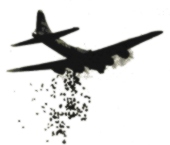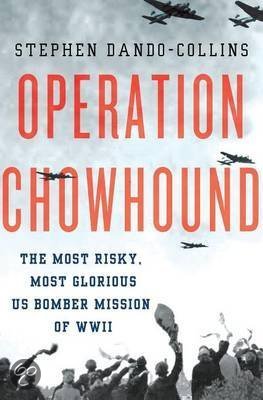Introduction
 On April 29, 1945 the citizens of Western Holland looked up at the sky with both disbelieve and joy. The roar of four-engine bombers made them realize that help was on it's way. The gigantic Lancasters came over so low that they could see the aircrews waving back at them.
On April 29, 1945 the citizens of Western Holland looked up at the sky with both disbelieve and joy. The roar of four-engine bombers made them realize that help was on it's way. The gigantic Lancasters came over so low that they could see the aircrews waving back at them.
This day was the beginning of operation Manna, a quickly organized effort of the RAF to bring food to the starving population of Holland.
Months before this day, in early September the war had seemed practically over. Once the Allied armies had broken out of the beachhead in Normandy, France they had seemed unstoppable. The Germans were driven back to their Heimat in the same speed as they had concurred France in 1940. By September France and Belgium were liberated and the Allied had crossed the borders of Holland and Germany.
No one could have predicted then that the worst was yet to come. The winter of '44-45 would later be known as "the hunger winter" and that was not without reason. The physical and emotional hardship of that winter pushed the population of the large cities of Western Holland to the limit of their endurance.
For several thousands the relief, which the allied provided in April '45, would come too late. For many others this relief truly was a gift from heaven.
This book gives an impression of the moving days in April and May '45. It does not provide the reader with a complete overview of the different relief actions, together with detailed figures. Nor does it aim to do so. The book gives an insight in the events that happened during these few days in April/May '45.
The relief-missions had a huge impact on the people that received the food, but also on the men that dropped or drove the food into occupied Holland. Fifty-five years later practically all those involved in the missions have vivid memories of them.
Much what is said in this book is written from memory many years after the missions happened. The human memory will not give one a perfect picture of all the events that happened years ago. It is for that reason not impossible that the stories that follow contain some errors, or contradict other sources concerning this subject.
I do hope that this book will show the reader why this relatively small operation that took place at the closing of the war still, after fifty-five years, bring a tear to the eyes of by many that witnessed the operation in 1945.
 Author: Hans Onderwater This book by Hans Onderwater is the standard work about the food drop missions over Occupied Holland with a bundle of information, photos and first hand accounts of the hunger winter and the food drop missions.
Author: Hans Onderwater This book by Hans Onderwater is the standard work about the food drop missions over Occupied Holland with a bundle of information, photos and first hand accounts of the hunger winter and the food drop missions.